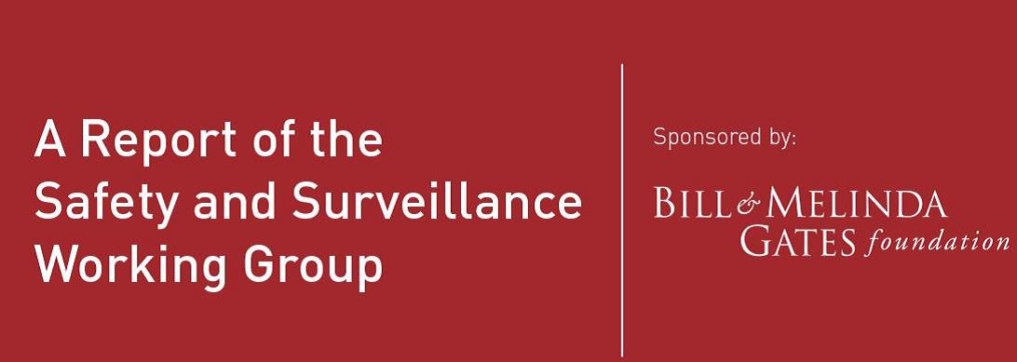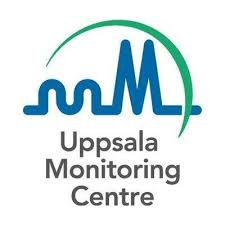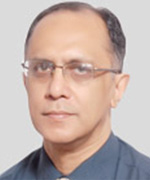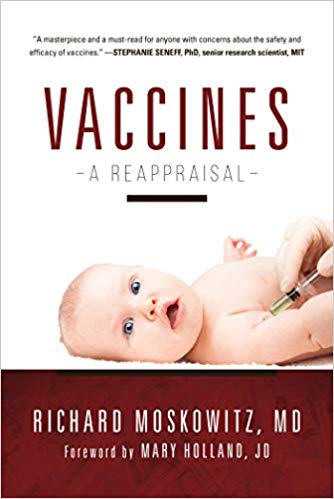The WHO-AEFI Vaccine Adverse Events Classification: an Apartheid Tool?
The promotion for the utilization of vaccines and the inadequate surveillance systems in poor, Third World countries is largely controlled by the Bill and Melinda Gates Foundation through the mantle of the World Health Organization (WHO) which administers public health programs in poor and middle income countries. Vaccine safety is the domain of the WHO Global Advisory Committee on Vaccine Safety (GACVS), established in 1999.

[custom-related-posts title=”Related Posts” none_text=”None found” order_by=”title” order=”ASC”]
The WHO-GACVS developed a two-tiered classification system for assessing and reporting adverse events following immunization (AEFI). The AEFI classification system used in Third World countries disqualifies Deaths following vaccination, as having any causal association with vaccines. The dubious rationale given by the WHO: if there was no statistically significant increase in deaths recorded during Phase 3 vaccine trials, death is not associated with vaccination. Those phase 3 trials are too small and too short to detect rare lethal adverse effects.
After a vaccine is licensed, all deaths and serious adverse reactions that had not been detected in Phase 3 trials are labelled as ‘coincidental deaths /events’ or ‘unclassifiable’. The association of death with vaccination is discounted.[1]
WHO-AEFI classification is used only in Third World countries; those that rely on the WHO sponsored public health programs. One of the vaccines aggressively promoted in the world’s poorest countries by the WHO in collaboration with GAVI the Vaccine Alliance, which is bankrolled by the Gates Foundation, is the pentavalent vaccine — a combination of 5 viruses; diphtheria, pertussis, tetanus, H influenza b and Hepatitis B. This vaccine is a major investment for the WHO and GAVI.[2] THE 2016–2020 INVESTMENT OPPORTUNITY – Gavi, the Vaccine … Gavi welcomes price trend for pentavalent vaccine
The pentavalent vaccine was launched in 2001 in Kenya. It was introduced in Sri Lanka in January 2008, but was withdrawn in April after five infants died following vaccination. A team of the WHO claimed that it was “unlikely” that the cause of death was related to the pentavalent. In May 2013, the pentavalent vaccine was introduced in Vietnam, but was suspended after 12 infants died following vaccination. According to GAVI, South Sudan was the 73rd GAVI-supported country to introduce the pentavalent vaccine. And by 2017, use of the pentavalent vaccine in GAVI-supported countries increased to 80%.
An Exploratory Analysis (2018) by Dr. Jacob Puliyel,[3] head of pediatrics at St. Stephens Hospital Delhi, India, and member of the National Technical Advisory Group on Immunization (NTAGI) of the Government of India, documented that following the shift from the DPT – diphtheria, pertussis, tetanus – vaccine in 2011, to the pentavalent vaccine, the number of deaths rose precipitously.
Dr. Puliyel calculated that data from states with good reporting of adverse events, suggest that there are likely to be 7,020–8,190 additional deaths each year in India, because of the shift from DPT to Pentavalent vaccine.
The response of the WHO to the alarming death rate was to adopt a new AEFI classification system (in 2013) developed by the WHO with support by the Global Advisory Committee for Vaccine Safety (GACVS) that, in effect, disregards entirely infant deaths following vaccination with the pentavalent vaccine—as if they didn’t happen.
The new AEFI classification was developed by GACVS; it redefined the “cause and effect” relationship between vaccination and death. Whereas non-lethal adverse events following vaccination are recorded, the new WHO classification eliminated the very possibility that death can result from vaccination; death following vaccination is deemed to be only coincidental and not due to the vaccine.
It’s obvious that the new AEFI classification method was crafted to shield both vaccine manufacturers and governments that determine childhood vaccination requirements. The WHO-AEFI classification scheme dismisses the inordinate number of deaths that have occurred and continue to occur following vaccination with the Pentavalent vaccine; a vaccine used in poverty-stricken countries in Asia, and India.
 The First World industrialized nations use the WHO-UMC (Uppsala Monitoring Centre in Sweden) classification. In an exchange in the BMJ (British Medical Journal, July 2019) between Dr. Rebecca Chandler[4] of the UMC, and Dr. Puliyel,[5] Dr. Chandler explained that the WHO-UMC causality criteria and the Naranjo algorithm were developed by various groups working within the greater field of pharmacovigilance. These classification systems were designed to detect adverse safety “signals” both qualitatively (on a “case-by-case” basis) and quantitatively (via statistical screening).[6] UMC holds and maintains the largest global database of individual Case Safety Reports known as VigiBase TM.
The First World industrialized nations use the WHO-UMC (Uppsala Monitoring Centre in Sweden) classification. In an exchange in the BMJ (British Medical Journal, July 2019) between Dr. Rebecca Chandler[4] of the UMC, and Dr. Puliyel,[5] Dr. Chandler explained that the WHO-UMC causality criteria and the Naranjo algorithm were developed by various groups working within the greater field of pharmacovigilance. These classification systems were designed to detect adverse safety “signals” both qualitatively (on a “case-by-case” basis) and quantitatively (via statistical screening).[6] UMC holds and maintains the largest global database of individual Case Safety Reports known as VigiBase TM.
Dr. Chandler confirmed that WHO-AEFI reports are not forwarded to UMC’s global database and that the WHO-AEFI classification is not used by any country in the industrialized higher income “First World”. Most reports in the UMC global database are countries that “do not rely upon the WHO public health for implementation of vaccine administration. “Therefore, most reports within the global database have not been subject to WHO AEFI causality assessment.”
The shocking conclusion one cannot help but draw is that the WHO classification system for adverse events following vaccination was crafted for use in devalued populations in the Third Word, where its use is imposed. This harks back to the days of institutionalized Apartheid. Understandably, Dr. Puliyel concluded that:
- “deaths and other serious adverse events following vaccination in the third world, that use WHO-AEFI classification are not recorded in any database for pharmacovigilance. It is as if the deaths of children in low (and middle) income countries are of no consequence.”
Dr. Puliyel asks the Uppsala Monitoring Centre to request the data from the Indian Government and other Asian countries where the pentavalent vaccine is used. And he urges the Indian government to stop using the WHO-AEFI classification; to develop instead, a proper database for pharmacovigilance like all developed countries. “Only such a transparent appraisal can reassure the public and build trust, and only this will reduce vaccine hesitancy.”
Can the Uppsala Monitoring Centre Evaluate India-Government Data on Deaths with Pentavalent Vaccine to Restore Public Trust, Jacob Puliyel, BMJ July 2019. Excerpt:

Utilising data from the Government of India, we have reported that there are 4.7 additional deaths within 72 hour of immunization, per million vaccinated with Pentavalent vaccine compared to children receiving DPT instead. Using data from states with good reporting of adverse events, we estimate that there are likely to be 7020–8190 additional deaths each year in the country, because of the shift from DPT to Pentavalent vaccine. This is a huge mortality burden.
Not one of these deaths has been investigated as a ‘vaccine reaction’, according to Rebecca Chandler of the Uppsala Monitoring Center in Sweden – the global hub for drug reaction monitoring.
Chandler clarified that the WHO-AEFI classification used in India is deployed only in developing countries. This classification helps to identify reactions caused because of the improper administration of vaccines and the use of a contaminated multi-dose vial; but not new vaccine-product-related reactions. Vaccine-product-related reactions occur even when the vaccine has been administered properly. The WHO-AEFI classification reports are not fed to databases that allow pharmacovigilance for these rare occurrences.
In developed countries, on the other hand, adverse-event-reports for drugs and vaccines are maintained within a single database and this allows for pharmacovigilance – to pick up an increase in the frequency of unusual symptoms.
Chandler’s response explains why the numerous deaths after the administration of the Pentavalent vaccine (combined diphtheria, pertussis, tetanus, H influenza b and Hepatitis B vaccine) in India and Asia have not been acknowledged as a possible ‘signal’ for investigation. Puliyel notes that data from states with good reporting of adverse events imply that there are likely to be 7020–8190 additional deaths each year in the country, because of the shift from DPT to Pentavalent vaccine. This is a huge mortality burden.
Is there any way in which the Uppsala Monitoring Centre can call up the data from the Government of India (and other Asian countries where the vaccine is used) and confirm or deny a possible causative association? Only such a transparent appraisal can reassure the public and build trust, and only this will reduce vaccine hesitancy.
“If not the Uppsala Monitoring Centre, then who? If not now, then when?” writes Jacob Puliyel
Jacob Puliyel MD MRCP M Phil puliyel@gmail.com
Phone 0091 9868035091
References:
[1] Revised World Health Organization (WHO)’S Causality Assessment Of Adverse Events Following Immunization—A Critique, Jacob Puliyel, Pathik Naik, F2000Research 2918
[2] https://www.gavi.org/about/mission/facts-and-figures/
https://www.gavi.org/…gavi/the-2016-2020-gavi-alliance-investment-opportunity/ ;
https://www.gavi.org/library/…/gavi-welcomes-price-trend-for-pentavalent-vaccine
[3] Deaths Reported after Pentavalent Vaccine Compared with Death Reported after Diphtheria‑Tetanus‑Pertussis Vaccine: An Exploratory Analysis, Jacob Puliyel, Jaspreet Kaur, Ashish Puliyel, Visnubhatla Sreenivas, Medical Journal of Dr. D.Y. Patil Vidyapeeth, 2017
[4] Modernising Vaccine Surveillance Systems To Improve Detection Of Rare Or Poorly Defined Adverse Events Rebecca Chandler, BMJ 2019
[5] Can the Uppsala Monitoring Centre Evaluate India-Government Data on Deaths with Pentavalent Vaccine to Restore Public Trust, Jacob Puliyel, 2019







